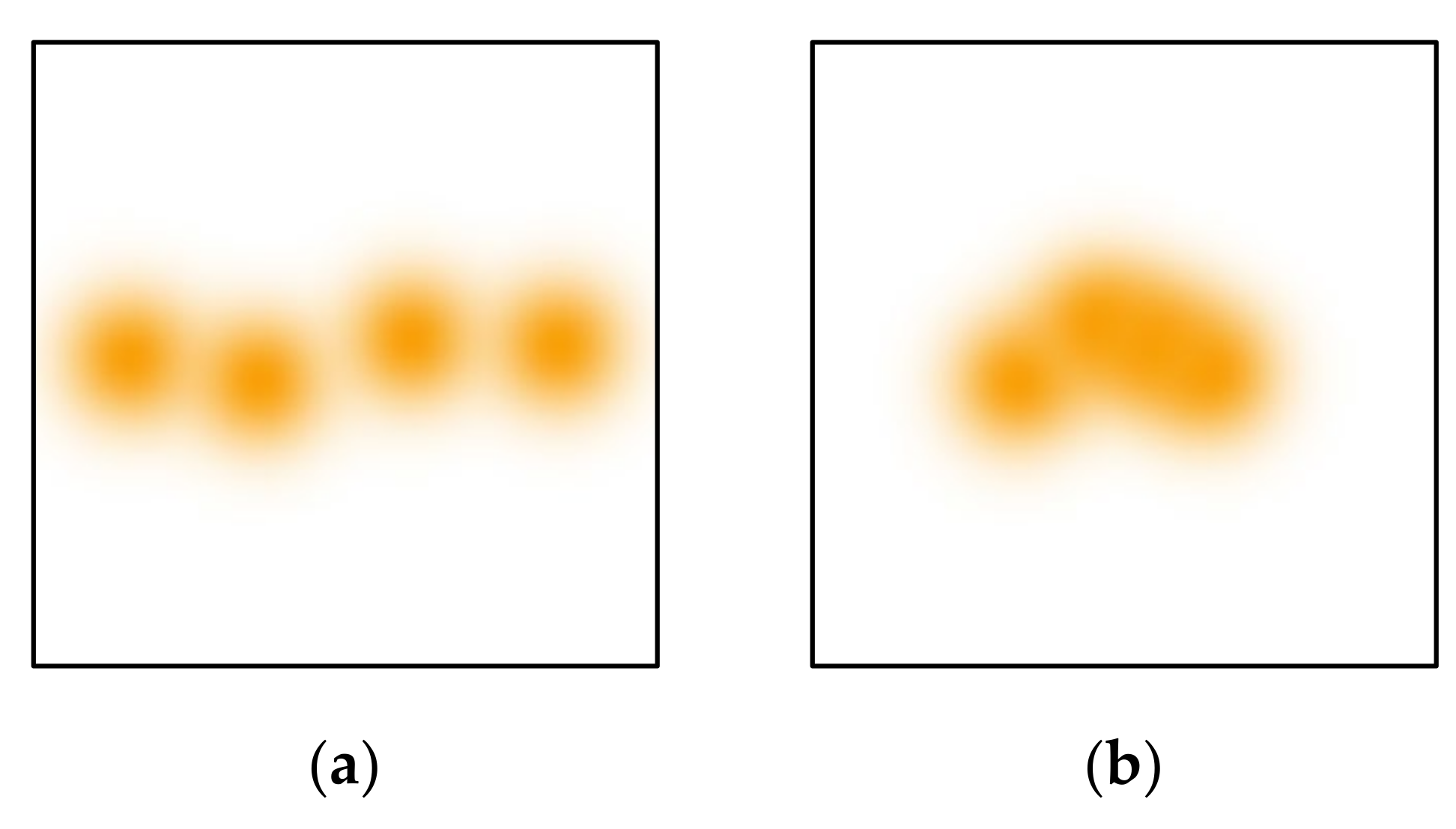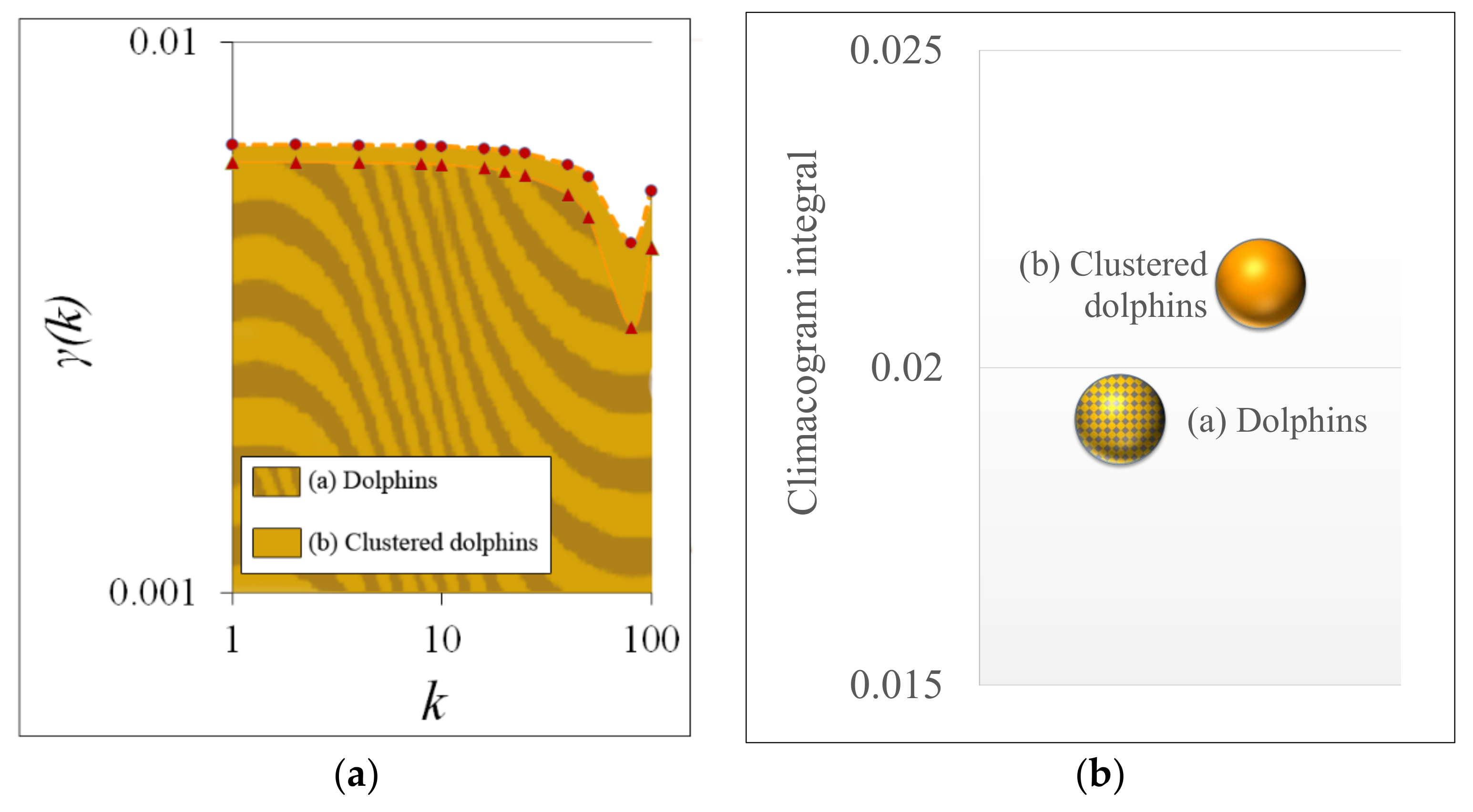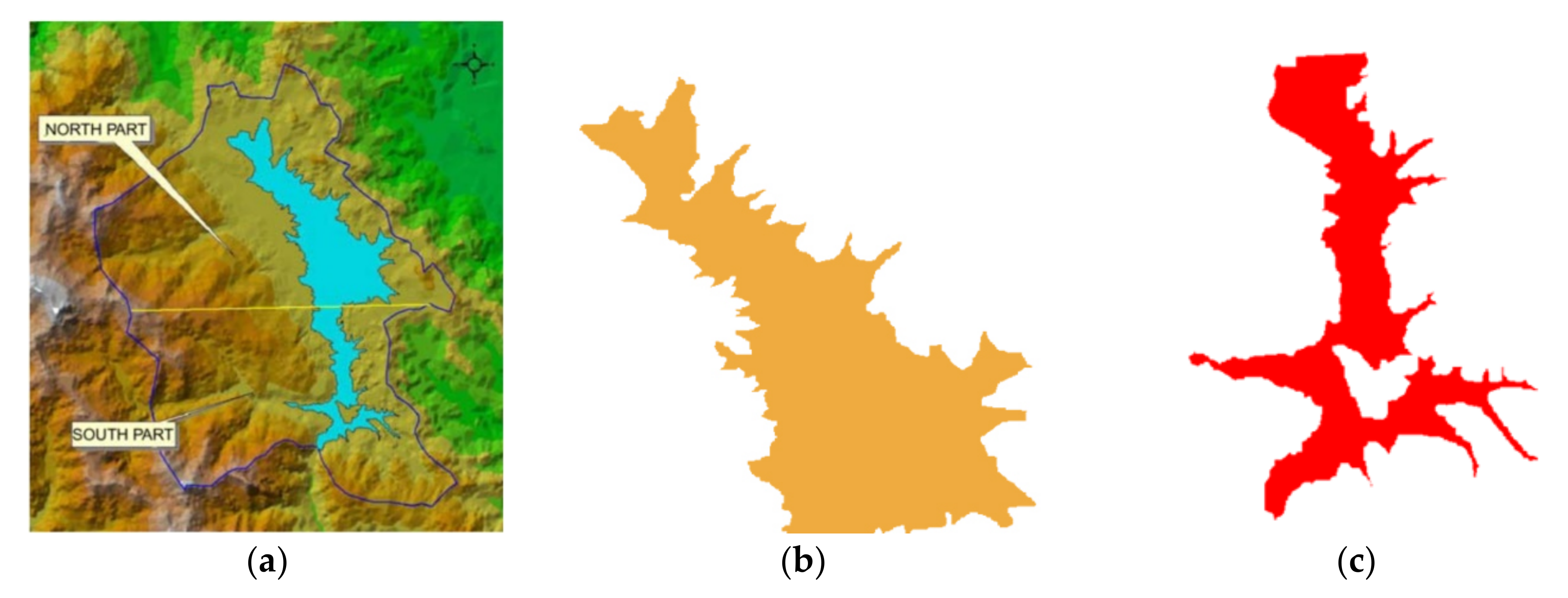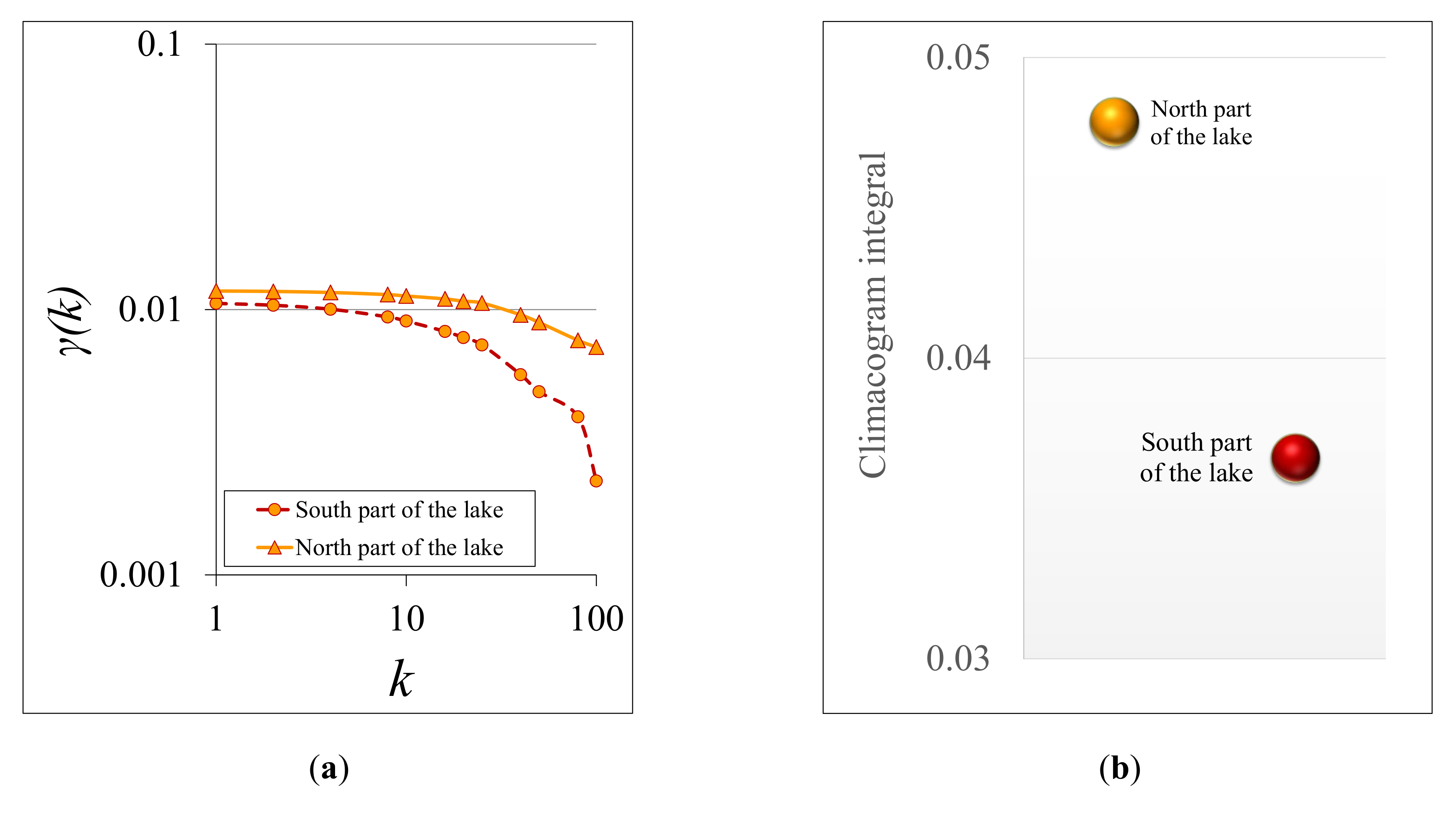Landscape Planning of Infrastructure through Focus Points’ Clustering Analysis. Case Study: Plastiras Artificial Lake (Greece)
Abstract
:1. Introduction
2. Methodology
3. Analysis
3.1. Clustering in the Analysis of Views of Objects
3.2. Clustering in the Analysis of ZTV Sketches
4. Case Study: Plastiras Lake
4.1. Clustering in the Analyis of Typical Views of the Reservoir
4.2. Clustering in the Analysis of ZTV Map
5. Discussion
6. Conclusions
Author Contributions
Funding
Institutional Review Board Statement
Informed Consent Statement
Data Availability Statement
Acknowledgments
Conflicts of Interest
References
- Krebs, A. Why Landscape Beauty Matters. Land 2014, 3, 1251–1269. [Google Scholar]
- Ellison, A.M. Preserving the Picturesque: Perceptions of Landscape, Landscape Art, and Land Protection in the United States and China. Land 2014, 3, 260–281. [Google Scholar] [CrossRef] [Green Version]
- The European Landscape Convention of the Council of Europe. Available online: https://www.coe.int/en/web/landscape (accessed on 9 October 2020).
- Greek Law 3827/2010: Ratification of the European Landscape Convention, Νόμος 3827/2010—ΦΕΚ 30/Α/25-2-2010, Κύρωση της Ευρωπαϊκής Σύμβασης του Τοπίου. Available online: https://www.e-nomothesia.gr/kat-periballon/n-3827-2010.html (accessed on 22 December 2020).
- Ioannidis, R.; Sargentis, G.-F.; Koutsoyiannis, D. Landscape design of civil infrastructure: Extravagance or obligation? Investigation through the analysis of best practices in dam design. Landsc. Urban Plan. 2021. under review. [Google Scholar]
- NO-TAV Movement against High Speed Train, Val di Susa Italy. Available online: https://ejatlas.org/conflict/no-tav-movement-against-high-speed-train-val-di-susa-italy (accessed on 22 December 2020).
- Manta, E.; Ioannidis, R.; Sargentis, G.-F.; Efstratiadis, A. Aesthetic Evaluation of Wind Turbines in Stochastic Setting: Case Study of Tinos Island, Greece. European Geosciences Union General Assembly 2020, Geophysical Research Abstracts, Volume 22, Online, EGU2020- 5484. Available online: https://0-doi-org.brum.beds.ac.uk/10.5194/egusphere-egu2020-5484 (accessed on 22 December 2020).
- Wascher, D.M. (Ed.) The Face of Europe. Policy Perspectives for European landscapes; ECNC Technical Report Series; European Centre for Nature Conservation: Tilburg, The Netherlands, 2000. [Google Scholar]
- Wascher, D.M. (Ed.) European Landscape Character Areas, Typologies, Cartography and Indicators for the Assessment of Sustainable Landscapes, ed. LANDSCAPE EUROPE in Collaboration with ELCAI Project Partners. 2005. Available online: https://library.wur.nl/WebQuery/wurpubs/fulltext/1778 (accessed on 9 October 2020).
- German Federal Nature Conservation Act. Bundesnaturschutzgesetz (BNatSchG). Gesetz über Naturschutz und Landschaftspflege, First version 14.05.1967, Actualized 01.03.2010; Inter Nationes: Bundesgesetzblatt, Germany, 2010; p. 2542. [Google Scholar]
- Blaschke, T. The role of the spatial dimension within the framework of sustainable landscapes and natural capital. Landsc. Urban Plan. 2006, 75, 198–226. [Google Scholar] [CrossRef]
- Guyer, P. Kant and the Claims of Taste, 2nd ed.; Cambridge University Press: Cambridge, UK, 1997; Available online: https://books.google.gr/books?hl=en&lr=&id=Np-a85hNq98C&oi=fnd&pg=PR7&ots=UkUy1LJGOE&sig=hJyMOmd1kUPms7RkxUe4F1QIUng&redir_esc=y#v=onepage&q&f=false (accessed on 5 October 2020).
- Shafer, E.l.; Hamilton, J.; Schmidt, E.A. Natural landscape preferences: A predictive model. J. Leisure Res. 1969, 1, 1–19. [Google Scholar]
- Cook, P.S.; Cable, T.T. The scenic beauty of shelterbelts on the Great Plains. Landsc. Urban Plan. 1995, 32, 63–69. [Google Scholar] [CrossRef]
- Forman, R.T.T.; Godron, M. Landscape Ecology; John Wiley & Sons Inc.: New York, NY, USA, 1986; 620p. [Google Scholar]
- Stephanou, J. Psychology of a Place. From the Real Place to Imaginary Place; Institut Français d‘Athénes: Athens, Greece, 1994. [Google Scholar]
- Stefanou, J. Etudes des Paysages—Vers une Iconologie de l‘image. Ph.D. Thesis, Strasbourg University, Strasbourg, France, 1980. [Google Scholar]
- Berg, M.; Scheringer, M. Problems in environmental risk assessment and the need for proxy measures. Fresenius Env. Bull. 1994, 3, 487–492. [Google Scholar]
- Franklin, J.F.; Forman, R.T.T. Creating landscape patterns by forest cutting: Ecological consequences and principles. Landscape Ecol. 1987, 1, 5–18. [Google Scholar] [CrossRef]
- Acking, C.A.; Sorte, G.J. How Do We Verbalize What We See? Landsc. Archit. 1973, 64, 470–475. Available online: https://0-www-jstor-org.brum.beds.ac.uk/stable/pdf/44665037.pdf (accessed on 8 October 2020).
- Adam, K. Prägende Merkmale, potenzielle Gefährdung und Schutzbedarf von Landschaftsbildern der Bundesrepublik Deutschland. Master’s Thesis, Fachbereich Geographie, Universität Marburg, Marburg, Germany, 1982; 241p. [Google Scholar]
- Environmental Impact Assessment—EIA (EU Directive 85/337/EEC). Available online: https://ec.europa.eu/environment/eia/eia-legalcontext.htm (accessed on 22 December 2020).
- Protocol on Strategic Environmental Assessment to the Convention on Environmental Impact Assessment in a Transboundary Context (SEA Protocol, Kyiv 2003) (EU Directive 2001/42/EC). Available online: https://ec.europa.eu/environment/eia/sea-legalcontext.htm (accessed on 22 December 2020).
- Greek Law 1225/Β/5-9-2006: Environmental Impact Assessment, Εκτίμηση των περιβαλλοντικών επιπτώσεων, ΦΕΚ 1225/Β/5-9-2006. Available online: http://www.et.gr/idocs-nph/search/pdfViewerForm.html?args=5C7QrtC22wFGQ40gSLPFOXdtvSoClrL87iJx0JCjFxoliYHTRwL0-OJInJ48_97uHrMts-zFzeyCiBSQOpYnT00MHhcXFRTstozpnVPh-wDJB4JwgNEuTBoWXYHbbtnvArd9-3ui3jc (accessed on 22 December 2020).
- Jessel, B. Elements, characteristics and character—Information functions of landscapes in terms of indicators. Ecol. Indic. 2006, 6, 153–167. [Google Scholar] [CrossRef]
- BUWAL (Bundesamt für Umwelt, Wald und Landschaft). Landschaft 2020. Analysen und Trends. Grundlagen zum Leitbild des BUWAL für Natur und Landschaft; BUWAL: Bern, Switzerland, 2003; 154p. [Google Scholar]
- A Sense of Place; Design Guidelines for Development near High Voltage Overhead Lines, Ordnance Survey National Grid, UK. Available online: https://www.nationalgrid.com/sites/default/files/documents/Sense%20of%20Place%20-%20National%20Grid%20Guidance.pdf (accessed on 8 October 2020).
- Vukomanovic, J.; Orr, B.J. Landscape Aesthetics and the Scenic Drivers of Amenity Migration in the New West: Naturalness, Visual Scale, and Complexity. Land 2014, 3, 390–413. [Google Scholar] [CrossRef] [Green Version]
- Morris, P.; Riki, T. (Eds.) Methods of Environmental Impact Assessment, Routledge, London 2009. Available online: https://books.google.gr/books?hl=en&lr=lang_en&id=uOvFtUmgt48C&oi=fnd&pg=PA120&dq=ztv+landscape&ots=YeYWE7YOPr&sig=XLsKXQUduqZmoTqqWgsVxC65rvM&redir_esc=y#v=onepage&q=ztv%20landscape&f=false (accessed on 8 October 2020).
- Cureton, P. Strategies for Landscape Representation: Digital and Analogue Techniques, Routledge, London 2017. Available online: https://books.google.gr/books?hl=en&lr=lang_en&id=pDolDwAAQBAJ&oi=fnd&pg=PP1&dq=ztv+landscape&ots=-GYYLddlIk&sig=JCKOOn-mvCkzC_JyXABzc5730Bc&redir_esc=y#v=onepage&q=ztv%20landscape&f=false (accessed on 8 October 2020).
- Evert, K.-J. (Ed.) Encyclopedic Dictionary of Landscape and Urban Planning, Springer 2010. Available online: https://books.google.gr/books?hl=en&lr=lang_en&id=FbRcEavj5uIC&oi=fnd&pg=PR1&dq=ztv+landscape&ots=WrKFaGHVCs&sig=IuAB73uymjDmoYdIX2kWqrKzKQg&redir_esc=y#v=onepage&q=ztv%20landscape&f=false (accessed on 8 October 2020).
- Cloquell-Ballester, V.-A.; Torres-Sibille, A.D.C.; Cloquell-Ballester, V.-A.; Santamarina-Siurana, M.C. Human alteration of the rural landscape: Variations in visual perception. Environ. Impact Assess. Rev. 2012, 32, 50–60. [Google Scholar] [CrossRef]
- Schönthaler, K.; Müller, F.; Barkmann, J. Synopsis of System Approaches to Environmental Research—German Contribution to Ecosystem Management; Federal Environmental Agency (Umweltbundesamt): Dessau-Roßlau, Germany, 2003; pp. 91–142. [Google Scholar]
- Appleton, J. The Experience of Landscape; John Wiley & Sons: Hoboken, NJ, USA, 1975. [Google Scholar]
- Gobster, P.H. An Ecological Aesthetic for Forest Landscape Management. Landsc. J. 1999, 18, 54–64, JSTOR. Available online: www.jstor.org/stable/43323479 (accessed on 8 October 2020).
- Appleton, J.; Landscape Evaluation: The Theoretical Vacuum. Trans. Inst. Br. Geogr. 1975, 120–123, JSTOR. Available online: www.jstor.org/stable/621625 (accessed on 8 October 2020).
- Ioannidis, R.; Koutsoyiannis, D. A review of land use, visibility and public perception of renewable energy in the context of landscape impact. Appl. Energy 2020, 276, 115367. [Google Scholar] [CrossRef]
- Sargentis, G.-F. Use and Technical Aspects of Materials in Sculpture. Ph.D. Thesis, School of Architecture, National Technical University of Athens, Athens, Greece, 2005. [Google Scholar] [CrossRef]
- Frank, S.; Fürst, C.; Koschke, L.; Witt, A.; Makeschin, F. Assessment of landscape aesthetics—Validation of a landscape metrics-based assessment by visual estimation of the scenic beauty. Ecol. Indic. 2013, 32, 222–231. [Google Scholar] [CrossRef]
- Wood, G. Is what you see what you get?: Post-development auditing of methods used for predicting the zone of visual influence in EIA. Environ. Impact Assess. Rev. 2000, 20, 537–556. [Google Scholar]
- Ross, A. Landscape Character and Visual Impact Appraisal: Development Scenarios, TEP—Warrington. 2009. Available online: https://www.greatercambridgeplanning.org/media/1235/landscape-character-and-visual-impact-appraisal-2020.pdf (accessed on 8 October 2020).
- De Vries, S.; de Groot, M.; Boers, J. Eyesores in sight: Quantifying the impact of man-made elements on the scenic beauty of Dutch landscapes. Landsc. Urban Plan. 2012, 105, 118–127. [Google Scholar]
- De Vries, S.; Buijs, A.E.; Langers, F.; Farjon, H.; Van Hinsberg, A.; Sijtsma, F. Measuring the attractiveness of Dutch landscapes: Identifying national hotspots of highly valued places using Google Maps. Appl. Geogr. 2013, 45, 220–229. [Google Scholar] [CrossRef]
- Jewellery. Available online: https://en.wikipedia.org/wiki/Jewellery (accessed on 2 October 2020).
- Oval with Points. Available online: https://en.wikipedia.org/wiki/Oval_with_Points (accessed on 2 October 2020).
- Plastiras Lake. Available online: https://en.wikipedia.org/wiki/Lake_Plastiras (accessed on 2 October 2020).
- Research Project for Plastiras Lake. National Technical University of Athens 2001–2002. Available online: http://www.itia.ntua.gr/2002plastiras/ (accessed on 28 December 2020).
- Koutsoyiannis, D. HESS Opinions “A random walk on water”. Hydrol. Earth Syst. Sci. 2010, 14, 585–601. [Google Scholar] [CrossRef] [Green Version]
- Dimitriadis, P. Hurst-Kolmogorov Dynamics in Hydrometeorological Processes and in the Microscale of Turbulence. Ph.D. Thesis, National Technical University of Athens, Athens, Greece, 2017. [Google Scholar]
- Monaco, R.; Soares, A.J. A New Mathematical Model for Environmental Monitoring and Assessment, From Particle Systems to Partial Differential Equations IV, 209; Springer: Berlin/Heidelberg, Germany, 2017; pp. 263–283. [Google Scholar]
- Monaco, R.; Negrini, G.; Salizzoni, E.; Soares, A.J.; Voghera, A. Inside-outside park planning: A mathematical approach to assess and support the design of ecological connectivity between Protected Areas and the surrounding landscape. Ecol. Eng. 2020, 149, 105748. [Google Scholar] [CrossRef]
- Assumma, V.; Bottero, M.; Monaco, R.; Soares, A.J. An integrated evaluation methodology to measure ecological and economic landscape states for territorial transformation scenarios: An application in Piedmont (Italy). Ecol. Indic. 2019, 105, 156–165. [Google Scholar] [CrossRef]
- Dimitriadis, P.; Koutsoyiannis, D.; Tzouka, K. Predictability in dice motion: How does it differ from hydrometeorological processes? Hydrol. Sci. J. 2016, 61, 1611–1622. [Google Scholar] [CrossRef] [Green Version]
- Sargentis, G.-F.; Dimitriadis, P.; Ioannidis, R.; Iliopoulou, T.; Koutsoyiannis, D. Stochastic Evaluation of Landscapes Transformed by Renewable Energy Installations and Civil Works. Energies 2019, 12, 2817. [Google Scholar] [CrossRef] [Green Version]
- Sargentis, G.-F.; Dimitriadis, P.; Koutsoyiannis, D. Aesthetical Issues of Leonardo Da Vinci’s and Pablo Picasso’s Paintings with Stochastic Evaluation. Heritage 2020, 3, 283–305. [Google Scholar] [CrossRef]
- Zhang, H.; Fritts, J.E.; Goldman, S.A. An entropy-based objective evaluation method for image segmentation. In Proceedings of the Storage and Retrieval Methods and Applications for Multimedia 2004, San Jose, CA, USA, 20 January 2004; pp. 38–49. [Google Scholar]
- Kohonen, T.; Somervuo, P. How to make large self-organizing maps for nonvectorial data. Neural Netw. 2002, 15, 945–952. [Google Scholar] [CrossRef]
- Abdou, I.; Pratt, W. Quantitative design and evaluation of enhancement/thresholding edge detectors. Proc. IEEE 1979, 67, 753–763. [Google Scholar] [CrossRef]
- Sahoo, P.K.; Soltani, S.; Wong, A.K.C.; Chen, Y.C. Survey: A survey of thresholding techniques. Comput. Vis. Graph. Image Process. 1988, 41, 233–260. [Google Scholar] [CrossRef]
- Otsu, N. A threshold selection method from gray-level histograms. IEEE Trans. Syst. Man Cybern. 1979, 9, 62–66. [Google Scholar] [CrossRef] [Green Version]
- Koutsoyiannis, D. Encolpion of Stochastics: Fundamentals of Stochastic Processes; Department of Water Resources and Environmental Engineering, National Technical University of Athens: Athens, Greece, 2013. [Google Scholar]
- Koutsoyiannis, D. Climacogram-Based Pseudospectrum: A Simple Tool to Assess Scaling Properties, European Geosciences Union General Assembly 2013; Geophysical Research Abstracts, EGU2013-4209; European Geosciences Union: Vienna, Austria, 2003; Volume 15. [Google Scholar]
- Dimitriadis, P.; Koutsoyiannis, D. Climacogram versus autocovariance and power spectrum in stochastic modelling for Markovian and Hurst–Kolmogorov processes. Stoch. Environ. Res. Risk Assess. 2015, 29, 1649–1669. [Google Scholar] [CrossRef]
- O’Connell, P.; Koutsoyiannis, D.; Lins, H.F.; Markonis, Y.; Montanari, A.; Cohn, T. The scientific legacy of Harold Edwin Hurst (1880–1978). Hydrol. Sci. J. 2016, 61, 1571–1590. [Google Scholar] [CrossRef] [Green Version]
- Sargentis, G.-F.; Dimitriadis, P.; Iliopoulou, T.; Ioannidis, R.; Koutsoyiannis, D. Stochastic Investigation of the Hurst-Kolmogorov behaviour in Arts, European Geosciences Union General Assembly 2018; Geophysical Research Abstracts, EGU2018-17082; European Geosciences Union: Vienna, Austria, 2018; Volume 20. [Google Scholar]
- Dimitriadis, P.; Tzouka, K.; Koutsoyiannis, D.; Tyralis, H.; Kalamioti, A.; Lerias, E.; Voudouris, P. Stochastic investigation of long-term persistence in two-dimensional images of rocks. Spat. Stat. 2019, 29, 177–191. [Google Scholar] [CrossRef]
- Hatzistathis, A.; Ispikoudis, I. Protection of Nature and Landscape Architecture, Giahoudi-Giapouli OE, Thessaloniki 1995, Not, Position in Library of Technical Chamber of Greece. Available online: http://library.tee.gr/vufind/Record/10086717 (accessed on 22 December 2020).
- Sargentis, G.-F.; Iliopoulou, T.; Sigourou, S.; Dimitriadis, P.; Koutsoyiannis, D. Evolution of Clustering Quantified by a Stochastic Method—Case Studies on Natural and Human Social Structures. Sustainability 2020, 12, 7972. [Google Scholar] [CrossRef]
- Hadjibiros, K.; Katsiri, A.; Andreadakis, A.; Koutsoyiannis, D.; Stamou, A.; Christofides, A.; Efstratiadis, A.; Sargentis, G.-F. Multi-Criteria Reservoir Water Management, 9th International Conference on Environmental Science and Technology, Rhodes island, Department of Environmental Studies, University of the Aegean. 2005. Available online: http://www.itia.ntua.gr/el/getfile/682/1/documents/2005CestRhodesPlastiras.pdf (accessed on 1 October 2020).
- Sargentis, G.-F.; Hadjibiros, K.; Christofides, A. Plastiras Lake: The impact of water level on the aesthetic value of the landscape. In Proceedings of the 9th International Conference on Environmental Science and Technology, Rhodes, Greece, 1–3 September 2005. [Google Scholar] [CrossRef]
- Sargentis, G.-F. Aesthetic Element in Water, Hydraulic Works and Dams. Diploma Thesis, School of Civil Engineering, National Technical University of Athens, Athens, Greece, 1998. [Google Scholar] [CrossRef]
- Sargentis, G.-F.; Hadjibiros, K.; Papagiannakis, I.; Papagiannakis, E. Plastiras Lake: Influence of the relief on the revelation of the water presence. In Proceedings of the 9th International Conference on Environmental Science and Technology, Rhodes, Greece, 1–3 September 2005. [Google Scholar] [CrossRef]
- Plastiras Lake, Photo Gallery. Available online: http://www.itia.ntua.gr/2002plastiras/photos/ (accessed on 22 December 2020).
- Christofides, A.; Efstratiadis, A.; Koutsoyiannis, D.; Sargentis, G.-F.; Hadjibiros, K. Resolving conflicting objectives in the manageme nt of the Plastiras Lake: Can we quantify beauty? Hydrol. Earth Syst. Sci. 2005, 9, 507–515. [Google Scholar] [CrossRef] [Green Version]
- Daniel, T.C. Whither scenic beauty? Visual landscape quality assessment in the 21st century. Landsc. Urban Plan. 2001, 54, 267–281. [Google Scholar] [CrossRef]
- Kennick, W.E.; Beardsley, M.C. Aesthetics from Classical Greece to the Present: A Short History. Philos. Rev. 1969, 78, 270. [Google Scholar] [CrossRef]
- Pope, A. An Epistle to the Right Honourable Richard Earl of Burlington: Occasion’d by his publishing Palladio’s Designs of the Baths, Arches, Theatres, &c. of Ancient Rome. By Mr. Pope. London: printed for L. Gilliver. 1731. Available online: https://www.eighteenthcenturypoetry.org/works/o3689-w0010.shtml (accessed on 5 October 2020).
- Nijhuis, S.; Jauslin, D.; van der Hoeven, F. (Eds.) Flowscapes: Designing Infrastructure as Landscape; TU Delft: Delft, The Netherlands, 2016. [Google Scholar]
- Gobster, P.H.; Ribe, R.G.; Palmer, J.F. Themes and trends in visual assessment research: Introduction to the Landscape and Urban Planning special collection on the visual assessment of landscapes. Landsc. Urban Plan. 2019, 191, 103635. [Google Scholar] [CrossRef]
- Landscape Planning (Terms’ Definition). Available online: https://www.eea.europa.eu/help/glossary/gemet-environmental-thesaurus/landscape-planning (accessed on 22 December 2020).













Publisher’s Note: MDPI stays neutral with regard to jurisdictional claims in published maps and institutional affiliations. |
© 2021 by the authors. Licensee MDPI, Basel, Switzerland. This article is an open access article distributed under the terms and conditions of the Creative Commons Attribution (CC BY) license (http://creativecommons.org/licenses/by/4.0/).
Share and Cite
Sargentis, G.-F.; Ioannidis, R.; Iliopoulou, T.; Dimitriadis, P.; Koutsoyiannis, D. Landscape Planning of Infrastructure through Focus Points’ Clustering Analysis. Case Study: Plastiras Artificial Lake (Greece). Infrastructures 2021, 6, 12. https://0-doi-org.brum.beds.ac.uk/10.3390/infrastructures6010012
Sargentis G-F, Ioannidis R, Iliopoulou T, Dimitriadis P, Koutsoyiannis D. Landscape Planning of Infrastructure through Focus Points’ Clustering Analysis. Case Study: Plastiras Artificial Lake (Greece). Infrastructures. 2021; 6(1):12. https://0-doi-org.brum.beds.ac.uk/10.3390/infrastructures6010012
Chicago/Turabian StyleSargentis, G.-Fivos, Romanos Ioannidis, Theano Iliopoulou, Panayiotis Dimitriadis, and Demetris Koutsoyiannis. 2021. "Landscape Planning of Infrastructure through Focus Points’ Clustering Analysis. Case Study: Plastiras Artificial Lake (Greece)" Infrastructures 6, no. 1: 12. https://0-doi-org.brum.beds.ac.uk/10.3390/infrastructures6010012







